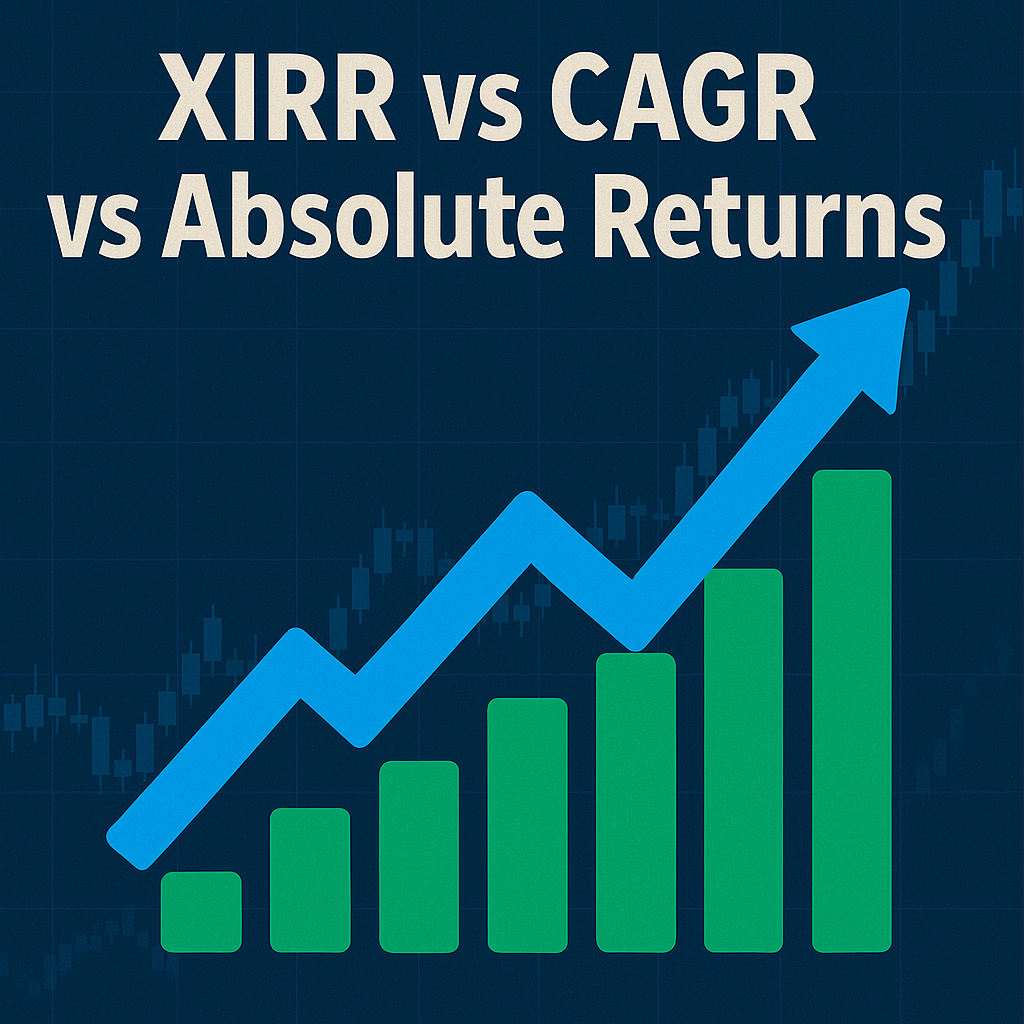xirr or cagr which is better
market literature and news.
 |
| XIRR vs CAGR vs Absolute Return |
1. XIRR:- Extended Internal Rate of Return
This is useful for calculating the returns of an SIP Investment. In SIP, we are investing some money regularly over a long period. While calculating SIP returns, we must consider each installment’s invested amount and period. The amount can also be different if we are increasing our SIP amount by some percent every year. A period is different for each installment. So, for calculating returns on these types of Investments like SIP, the XIRR method is suitable. It helps the investor to calculate the return on their SIP investments correctly.
In ‘XIRR’, the annual average return of each installment is calculated, and then they are adjusted to give you the overall average annual rate of return for all your investments. It is very difficult to calculate XIRR manually. You can take the help of Excel. There is a function called XIRR in Excel. Users can try it out
in Excel.
=XIRR (value, dates, guess)
Tip:- By default, the guess is 10% in MS Excel.
Video of how to use XIRR in MS Excel
CAGR:- Compounded Annual Growth Rate.
It means the annual growth rate of an investment over a specified period longer than one year. An important thing to note in CAGR is that the effect of compounding is included in CAGR. Compounding is profits earned on profits. You can compare this CAGR with compound interest, which we have learned in
school. It will give you an average yearly return on your investment.
We try to use CAGR with the following example.
If you invested Rs 1 Lakh in a mutual fund scheme and the value of your investment after 3 years becomes Rs 1.5 Lakhs, then the CAGR return will be 14.5%.
The formula for calculating CAGR is
CAGR = (Ending Value / Starting Value) ^ (1 / Investment tenure) – 1.
CAGR = (1.5 / 1) ^ ( 1/3) -1 = 14.5%
Use can try it in MS Excel by entering the following formula.
= ((1.5/1) ^ (1/3) – 1)
You can use MS Excel to calculate CAGR returns. There is no function by the name CAGR in Excel. You can manually input the figures in an Excel formula to calculate the CAGR.
When there is a single input and a single output, you can use CAGR.
XIRR vs CAGR for Mutual Fund SIP: Which one is better?
Absolute Returns :
Absolute return is the total return earned from an investment. The absolute return doesn’t take into consideration the investment period. It is used to calculate how much gain or loss you have made from your investment. Absolute return in a Mutual Fund is the point-to-point returns earned from a mutual fund scheme.
Absolute return = ((Final Value – Initial Value) ÷ Initial Value) x 100
For example, Manoj invested Rs. 100 in the stock market. His investment becomes
150 in one year. The absolute return will be calculated as follows:
Absolute returns % = (150-100) ÷ 100) x 100
In this case, Manoj has earned an absolute return of 50%.
Conclusions: –
XIRR is useful for calculating SIP returns. When the investment amount and period change during the tenure of the investment. ‘XIRR’ is most suitable. “CAGR” is appropriate for calculating lump-sum investment returns in mutual funds or shares. You can use CAGR to calculate the annual growth rate of your investment. ABSOLUTE Return is used to calculate the gain or loss you have made on an investment.
The reader will also like to read about the following topics
4. Bull vs Bear Phase in the Stock Market
5 . XIRR vs CAGR vs Absolute Return
6. Nifty 50 vs Nifty Next 50 vs Nifty 100
7. Top 5 gold ETF funds in India

